
Fundamentals
The concept of Individualized Scalp Wellness, at its very basic expression, refers to the careful, personalized attention given to the skin covering one’s head, the very foundation from which our hair springs. It acknowledges that each person’s scalp possesses unique needs, influenced by a symphony of biological factors, environmental exposures, and the practices of daily life. For individuals with textured hair, particularly those from Black and mixed-race ancestries, this understanding is deeply intertwined with centuries of collective memory and the living testament of hair as a profound marker of identity. The meaning here extends beyond mere hygiene; it speaks to a sacred tending, a reciprocal relationship between the individual and their heritage.
Consider the scalp as fertile earth, a garden plot from which precious crops grow. Just as a seasoned farmer understands that different soils and seeds call for distinct care—some needing more moisture, others demanding specific nutrients—so too does the scalp of someone with coily, kinky, or curly strands require a nuanced approach. The inherent structure of textured hair, with its unique follicular shape and lower distribution of natural oils along the hair shaft, means it possesses a predisposition for dryness.
This inherent biological truth necessitates a specific form of tending, a dedicated practice that honors its particular requirements. When we discuss Individualized Scalp Wellness, we recognize these foundational biological differences, understanding that a generalized approach to scalp care often falls short, particularly for those whose hair carries the lineage of the African continent.

Foundations of Scalp Vitality
A truly holistic approach to scalp wellness begins with elemental biological principles. The scalp, a dynamic environment, contains hair follicles, sebaceous glands that produce natural oils, and a delicate microbiome. The well-being of this intricate ecosystem directly influences the health and growth of hair.
When the scalp is balanced, hydrated, and free from excessive buildup or irritation, hair follicles are better positioned to thrive, fostering stronger, more resilient strands. This basic understanding forms the bedrock upon which any personalized care regimen is built.
Individualized Scalp Wellness begins with discerning the unique biological whispers of each scalp, recognizing that the very landscape of our hair’s genesis calls for specific, attentive care.
Recognizing the distinct needs of each scalp is paramount. This includes assessing its natural oil production, sensitivity levels, and propensity for conditions such as dryness, flaking, or irritation. These observations, often learned through intimate, generational practices, lay the groundwork for selecting appropriate cleansing methods and fortifying ingredients.
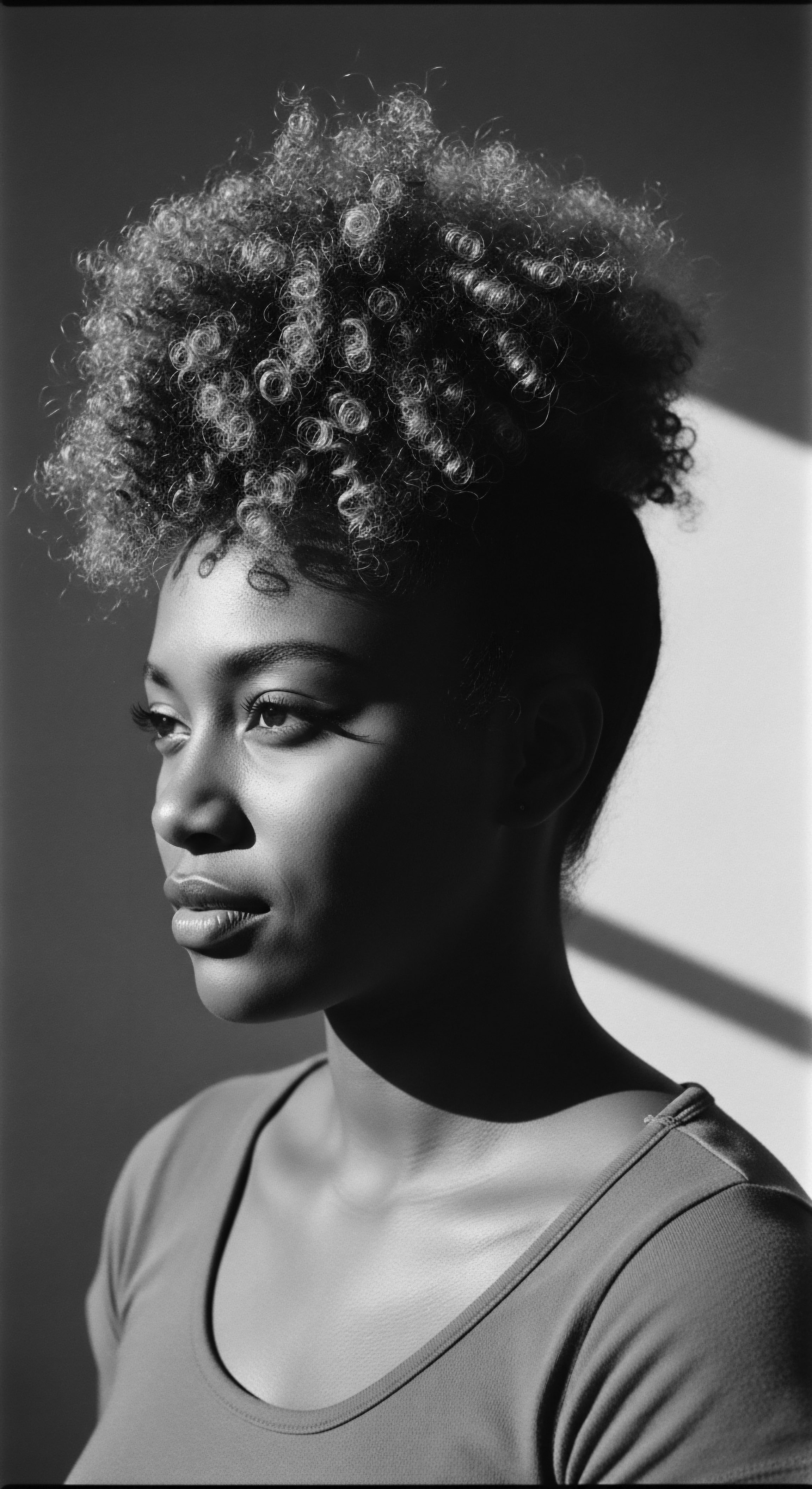
Ancestral Wisdom in Elemental Care
Throughout history, and across diverse African communities, a profound intuitive understanding of scalp vitality guided hair care. Long before modern scientific categorization, ancestral practices inherently addressed individualized scalp needs through observation and adaptation. If a scalp appeared dry, certain plant-based oils or butters were chosen; if irritation surfaced, soothing herbs were applied. This was not a one-size-fits-all methodology, but rather an adaptive, responsive engagement with the body’s subtle signals, passed down through the hands and voices of elders.
- Indigenous Cleansing Rituals ❉ The use of natural clays, like Moroccan rhassoul clay, or plant-based soaps, such as African black soap, were traditional methods for cleansing the scalp without stripping its essential moisture. These natural elements provided a gentle yet effective means of purification.
- Nourishing Botanicals ❉ Ingredients native to African lands, including Shea Butter, Coconut Oil, Castor Oil, and Argan Oil, were widely employed. These were chosen for their deep moisturizing, protective, and anti-inflammatory properties, specifically supporting scalp health for diverse hair textures.
- Hand-Applied Tending ❉ The very act of applying these traditional remedies often involved mindful scalp massage, a practice that stimulates blood circulation and distributes natural oils. This tactile engagement with the scalp reflected a deep reverence for its role in overall well-being.
The core of Individualized Scalp Wellness for textured hair, even in its most fundamental sense, is a commitment to listening to what the scalp communicates and responding with deliberate, heritage-informed care. This foundational understanding lays the pathway for more intricate explorations of its meaning and significance.

Intermediate
Moving beyond the elemental, Individualized Scalp Wellness signifies a more refined understanding of the symbiotic relationship between the scalp’s physiological condition and the unique attributes of textured hair, especially within the vast and layered context of Black and mixed-race experiences. Here, the meaning of this concept deepens, acknowledging not only the biological predispositions but also the historical forces, communal rituals, and cultural expressions that have shaped scalp care traditions across generations. It suggests a bespoke approach, one that carefully considers the individual’s specific hair texture, lifestyle, and ancestral practices to foster a thriving scalp environment.
The sebaceous glands on the scalp produce sebum, a natural oil that travels along the hair shaft to moisturize both the skin and the strands. For textured hair, particularly those with tighter curl patterns, this journey is often more challenging. The very coiling of the strands can impede the even distribution of sebum, leading to inherent dryness along the length of the hair and sometimes concentrated oiliness at the scalp.
This physiological reality makes tailored scalp care not simply beneficial but essential. An understanding of Individualized Scalp Wellness acknowledges these structural nuances, advocating for practices that specifically address how moisture is delivered, retained, and balanced across the entire hair system.
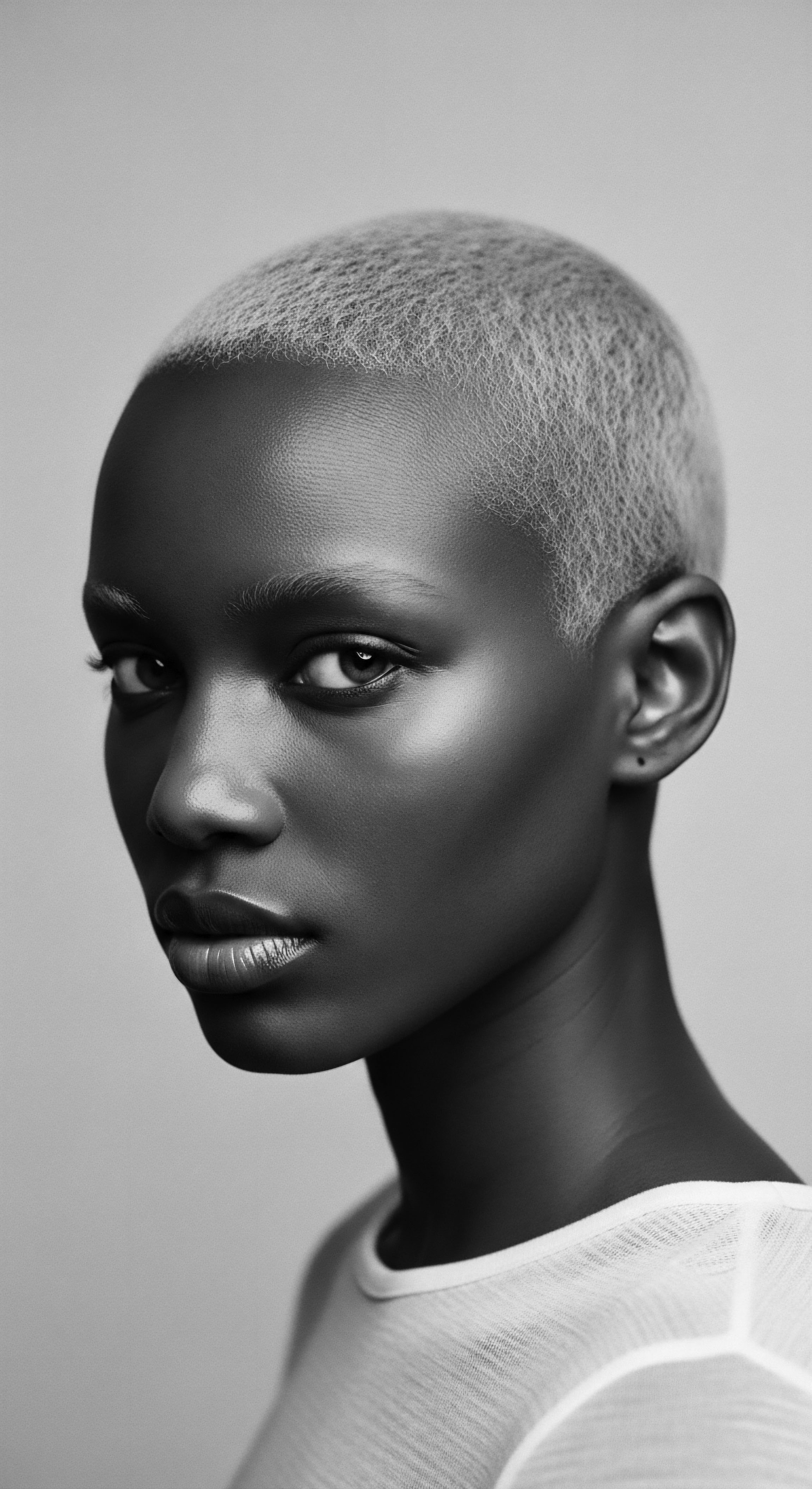
Interpreting the Scalp’s Narrative
The scalp often tells a story, revealing its needs through subtle indicators like dryness, itching, or product buildup. For those with textured hair, issues such as scaliness, irritation, and increased trans-epidermal water loss (TEWL) are frequently reported. Addressing these signals with precision requires moving beyond generic solutions.
It calls for an interpretation of the scalp’s unique narrative, a story written in its moisture levels, its sensitivity, and its response to various external factors. This necessitates a thoughtful selection of products and practices that align with the scalp’s particular constitution.
True Individualized Scalp Wellness for textured hair is a continuous conversation between the scalp’s unique biological story and the historical practices that have always sought to listen and respond.
For instance, frequent washing, while suitable for some hair types, can strip textured hair scalps of their limited natural oils, leading to exacerbated dryness. Conversely, infrequent cleansing without proper technique can result in product accumulation, hindering follicle function. The optimal frequency and method of cleansing for textured hair must therefore be determined by individual scalp observations, rather than adherence to a universal standard.
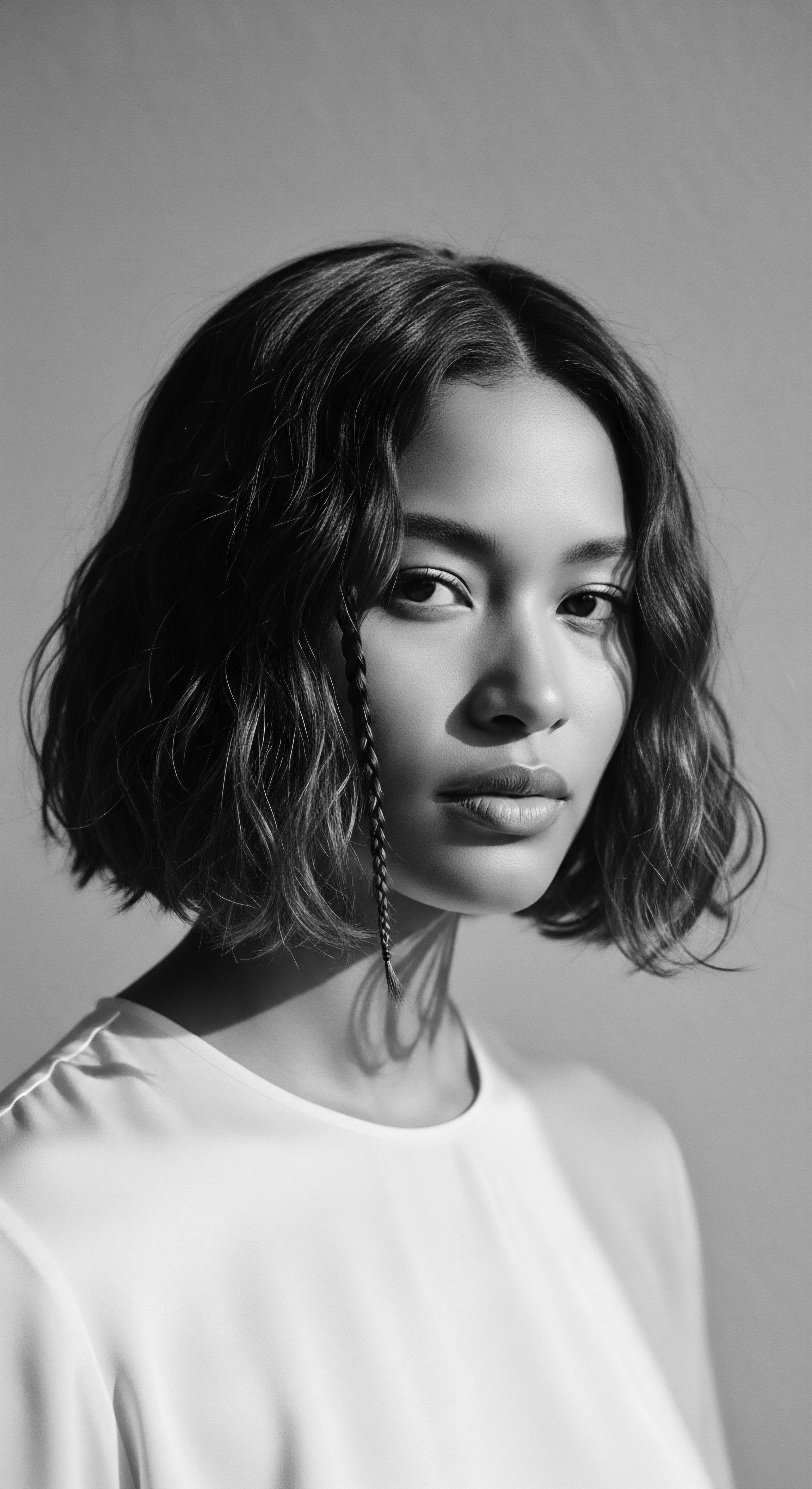
Ancestral Rhythms and Modern Understanding
Across the African diaspora, generations have developed intricate scalp care practices that, by their very nature, were individualized. These traditions were not formalized scientific studies but embodied a deeply empirical understanding, passed down through lived experience and communal sharing. Consider the ritual of Scalp Oiling, a practice with ancient roots in African traditions. This was not a uniform application but a nuanced one, where specific oils—like Castor Oil, recognized for its ricinoleic acid content that boosts circulation, or Shea Butter, celebrated for its emollient properties—were selected based on perceived scalp needs and the desired outcome.
| Ancestral Practice Scalp Oiling & Massage |
| Modern Explanation/Benefit for Individualized Scalp Wellness Enhances blood circulation to follicles, distributes natural oils, and provides deep moisture to mitigate dryness common in textured hair. |
| Ancestral Practice Protective Hairstyles (e.g. Braids, Locs) |
| Modern Explanation/Benefit for Individualized Scalp Wellness Minimizes physical manipulation and environmental exposure, allowing the scalp to rest and hair to retain length. Requires careful tension management to avoid traction alopecia. |
| Ancestral Practice Use of Natural Butters & Clays |
| Modern Explanation/Benefit for Individualized Scalp Wellness Provides gentle cleansing without stripping natural oils, while offering rich emollient properties and mineral content to support scalp barrier function. |
| Ancestral Practice Communal Hair Care Rituals |
| Modern Explanation/Benefit for Individualized Scalp Wellness Fostered the sharing of empirical knowledge, observation of individual responses to treatments, and adaptation of practices based on collective experience and personal needs. |
| Ancestral Practice These practices, honed over generations, inherently supported individualized scalp health through attentive observation and natural remedies. |
The very acts of braiding hair, which could take hours or even days, often involved careful sectioning and the application of nourishing preparations to the scalp, ensuring comfort and promoting overall health. This communal aspect of hair care, documented in various African societies, allowed for a shared understanding of diverse scalp types and the subtle art of customizing care. It was a system of practical application and collective knowledge transfer, predating formalized scientific inquiry but brimming with inherent wisdom regarding individualized needs.
Embracing Individualized Scalp Wellness today means weaving this ancestral responsiveness into contemporary routines. It involves consciously selecting ingredients, understanding their interactions with textured hair and scalp physiology, and adapting care routines to the scalp’s dynamic state. This bridges ancient practices with modern insights, creating a pathway to thriving hair that honors its roots.

Academic
The comprehensive interpretation of Individualized Scalp Wellness transcends a simple definition; it encompasses a sophisticated understanding of the intricate biological, environmental, and socio-historical forces that shape the health of the pilosebaceous unit, particularly within the textured hair phenotype. For individuals of African and mixed-race descent, this concept is inextricably linked to a complex heritage, bearing the imprints of ancient practices, the profound rupture of historical oppression, and the resilient evolution of self-expression. It calls for an academic rigor that deconstructs the interplay between genotype, epigenetics, and cultural practices, asserting that optimal scalp vitality can only be achieved through a deeply personalized, culturally responsive framework. The meaning of Individualized Scalp Wellness, from this vantage point, is a dynamic dialogue between the intrinsic biological predispositions of textured hair and the extrinsic influences, both historical and contemporary, that demand tailored interventions.
Fundamentally, the anatomical and physiological distinctions of afro-textured hair—characterized by its elliptical follicular shape and the helical twisting of the hair shaft—render it inherently susceptible to specific vulnerabilities. This structural particularity often results in slower growth rates, increased fragility, and reduced efficacy in sebum distribution along the hair shaft compared to other hair types. The consequence frequently observed is a predisposition to dryness, reduced moisture retention, and heightened susceptibility to mechanical damage and specific dermatological conditions. Therefore, the scientific delineation of Individualized Scalp Wellness necessitates a profound appreciation for these inherent characteristics.
It postulates that a successful regimen must address the unique fluid dynamics of sebum flow, the integrity of the scalp barrier, and the specific inflammatory responses often associated with tighter curl patterns. A truly individualized approach, therefore, moves beyond superficial product recommendations, delving into the underlying biological mechanisms that differentiate scalp health requirements across diverse hair textures.
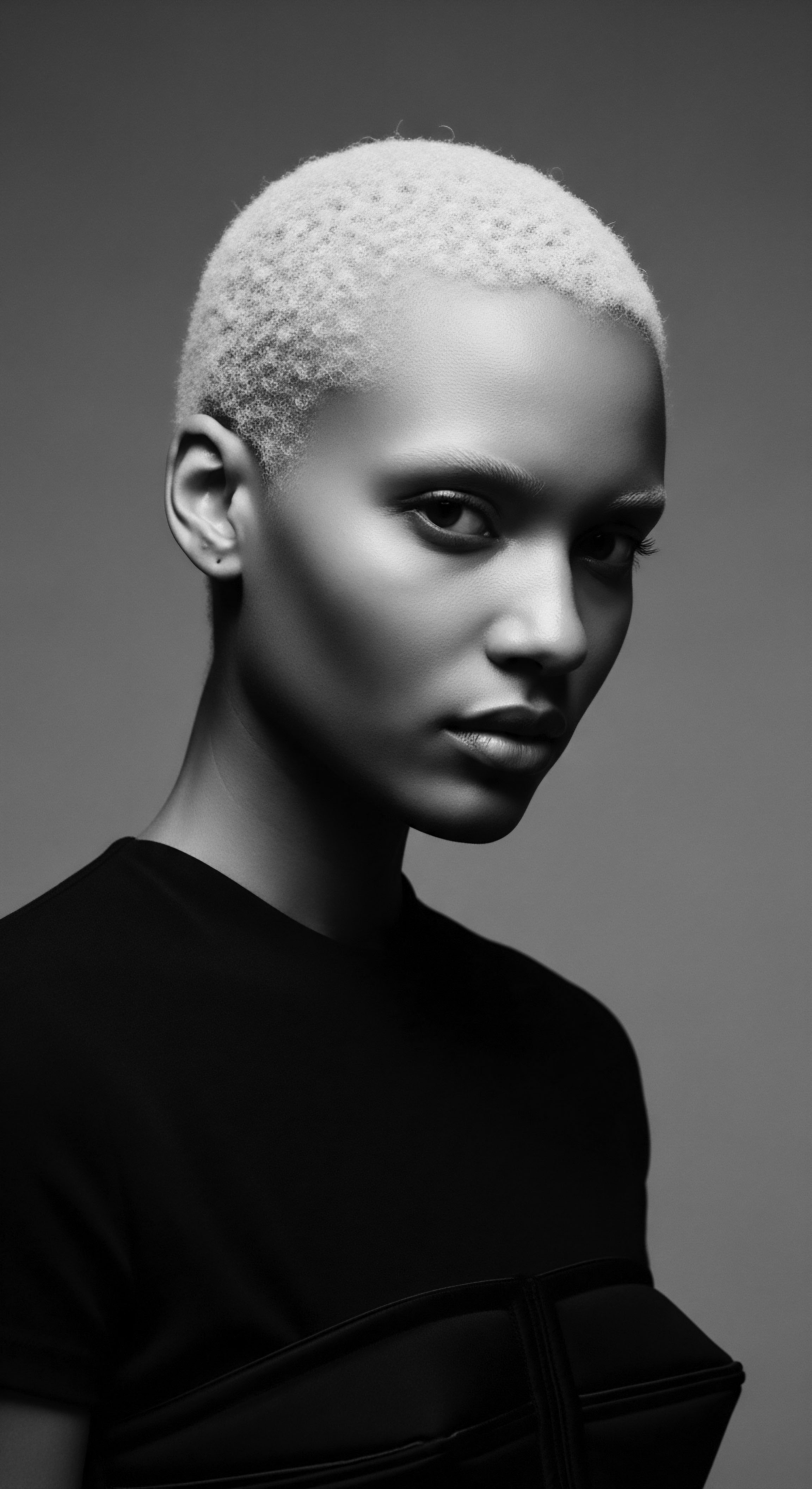
The Ancestral Imperative ❉ A Case Study in Hair as Cultural Cartography
To fully grasp the deep significance and practical application of Individualized Scalp Wellness, one must acknowledge the profound historical example of hair as a living document of heritage, particularly within the context of the transatlantic slave trade. The deliberate act of shaving the heads of enslaved Africans upon arrival in the Americas was not a trivial matter; it was a calculated, dehumanizing act designed to sever spiritual, cultural, and communal ties. This historical trauma underscores the inherent connection between hair, scalp, and identity. In pre-colonial African societies, hairstyles served as intricate markers of social status, age, marital standing, tribal affiliation, spiritual beliefs, and even wealth.
The very methods of tending to these elaborate styles, which often required hours or days to complete and were communal endeavors, implicitly fostered a meticulous, personalized approach to scalp care. Traditional oils, butters, and cleansing agents were selected and applied not just for aesthetic purposes, but for their therapeutic qualities, reflecting an acute, though uncodified, understanding of scalp physiology and the unique requirements of various hair textures.
The historical excision of traditional Black hair practices during slavery represents a profound disruption to ancestral scalp wellness, necessitating a contemporary re-engagement with its foundational wisdom.
This historical imposition of Eurocentric beauty standards, which often pathologized afro-textured hair as “nappy” or “uncivilized,” simultaneously disrupted centuries of inherited scalp care knowledge. Forced assimilation and the lack of access to traditional tools and ingredients during enslavement meant that methods of hair and scalp care had to adapt, often under duress. The resilience of Black communities, however, led to the clandestine preservation and ingenious adaptation of these practices, demonstrating a deeply ingrained, individualized attention to scalp health as a silent act of defiance and cultural continuity.
(Byrd and Tharps, 2001) This enduring legacy highlights that Individualized Scalp Wellness for textured hair is not a modern invention but a rediscovery and revalidation of ancestral wisdom, filtered through the lens of contemporary scientific insight. The enduring impact of this historical trauma is evident even today, as individuals with textured hair still face discrimination based on their hair choices, demonstrating the persistent link between hair, identity, and societal perceptions.
The meaning of Individualized Scalp Wellness, thus, extends into the psychological and sociological dimensions. When scalp health is compromised due to inadequate care or societal pressures, it can profoundly affect an individual’s self-perception and mental well-being. Studies indicate that hair and scalp disorders are significant concerns for patients of African descent seeking dermatological care, with a perceived lack of knowledge among some practitioners regarding the specific needs of Black hair. This underscores the urgent necessity for a culturally competent approach to Individualized Scalp Wellness, one that acknowledges the historical context and the persistent challenges faced by these communities.

Multidimensional Parameters for Personalized Scalp Vitality
A truly academic approach to Individualized Scalp Wellness necessitates a multidimensional assessment, moving beyond superficial symptoms to analyze underlying factors. This involves:
- Microbiome Analysis ❉ The scalp’s microbial ecosystem plays a critical role in its health. Disruptions in this delicate balance, often influenced by product choices, cleansing frequency, and environmental factors, can lead to conditions like dandruff or seborrheic dermatitis. An individualized approach would consider the unique microbial signature of a person’s scalp to recommend targeted interventions.
- Transepidermal Water Loss (TEWL) and Barrier Function Assessment ❉ Textured hair scalps exhibit higher TEWL, indicating a compromised skin barrier. Understanding this predisposition allows for the selection of humectant-rich and occlusive ingredients that prevent moisture loss and fortify the barrier, such as those found in traditional shea butter or castor oil preparations.
- Follicular Morphology and Hair Growth Cycle Phenotyping ❉ The distinct elliptical shape of textured hair follicles affects keratinization and the hair growth cycle. Tailoring stimulation techniques and product formulations to support these unique growth patterns, rather than imposing strategies suited for straight hair, becomes paramount.
- Genetic Predispositions and Epigenetic Influences ❉ Acknowledging the role of genetics in determining hair texture, thickness, and sebum production is essential. Furthermore, recognizing epigenetic factors—how environmental stressors and lifestyle choices influence gene expression related to hair health—adds another layer of personalization.
The application of scientific principles within this heritage-focused framework necessitates a departure from one-size-fits-all product formulations. For example, traditional ingredients like Tea Tree Oil and Rosemary, long recognized in various cultures for their medicinal properties, find scientific validation for their antimicrobial, anti-inflammatory, and circulation-stimulating effects on the scalp. Similarly, the use of Apple Cider Vinegar to balance scalp pH echoes modern dermatological recommendations for maintaining an acidic scalp environment to deter pathogenic growth.

Integrated Approaches for Sustained Well-Being
From an academic perspective, Individualized Scalp Wellness integrates clinical dermatology, trichology, ethnobotany, and cultural studies to formulate comprehensive strategies. This means moving beyond treating symptoms to addressing root causes, often by blending scientific understanding with ancestral wisdom. For instance, addressing traction alopecia, a condition disproportionately affecting individuals with textured hair due to tight styling practices, requires not only medical intervention but also cultural sensitivity in recommending alternative styles and techniques that preserve hair and scalp integrity.
The significance of Individualized Scalp Wellness is further underscored by the growing recognition of the scalp as an extension of facial skin, demanding similar levels of attentive care. Yet, this recognition must be contextualized within the specific needs of textured hair, which, as studies show, tends to be drier due to sebum’s difficulty in traversing its coiled structure. This leads to heightened vulnerability to conditions like seborrheic dermatitis and general flakiness.
This sophisticated understanding of Individualized Scalp Wellness for textured hair represents a deliberate reclamation of agency. It empowers individuals to become informed custodians of their scalp health, leveraging both the rigorous insights of modern science and the deep, resilient knowledge passed down through the African diaspora. This intellectual journey contributes to a broader decolonization of beauty standards, affirming the inherent health and beauty of textured hair in all its forms.

Reflection on the Heritage of Individualized Scalp Wellness
The journey through Individualized Scalp Wellness, particularly for textured hair, reveals itself as a profound meditation on heritage, a living archive of care passed through time. It is a testament to the enduring wisdom of those who came before us, a whispered instruction from the ancestors, now amplified by the clarity of contemporary understanding. This reflection carries us beyond mere definitions, inviting us to contemplate the essence of human connection to self and lineage, manifest in the tender tending of the scalp and the stories held within each strand.
The collective memory held within Black and mixed-race communities, spanning continents and centuries, speaks to a consistent reverence for hair as a spiritual conduit, a social signifier, and a source of personal power. The forced severing of traditional hair practices during the transatlantic slave trade was an attempt to erase identity, yet the spirit of personalized care persisted. This historical resilience shaped current hair care rituals, turning acts of grooming into moments of quiet self-affirmation and communal bonding.
From shared detangling sessions to intricate braiding circles, the communal aspect of hair care serves as a powerful link to ancestral practices. These moments, often filled with storytelling and shared wisdom, inherently fostered a responsive approach to each individual’s scalp needs, adapting techniques and ingredients based on generations of empirical observation.
As we look to the future, Individualized Scalp Wellness stands as a beacon, guiding us to reclaim and revere the innate strength and beauty of textured hair. It compels us to honor the biological truths of our strands while simultaneously drawing from the rich wellspring of ancestral knowledge. The goal is not simply a healthy scalp in isolation, but a holistic state of well-being that intertwines physical vitality with cultural pride, historical awareness, and spiritual alignment. It is a continuous dialogue between the ancient whispers of care and the evolving language of science, all converging to nurture the profound significance of our hair’s deep past and vibrant future.
Individualized Scalp Wellness stands as a living testament to ancestral resilience, reminding us that care for our textured hair is a continuum of heritage, identity, and enduring vitality.
This continuous unfolding of understanding ensures that Individualized Scalp Wellness remains a dynamic, evolving concept, ever responsive to the needs of the individual and the collective spirit of heritage.
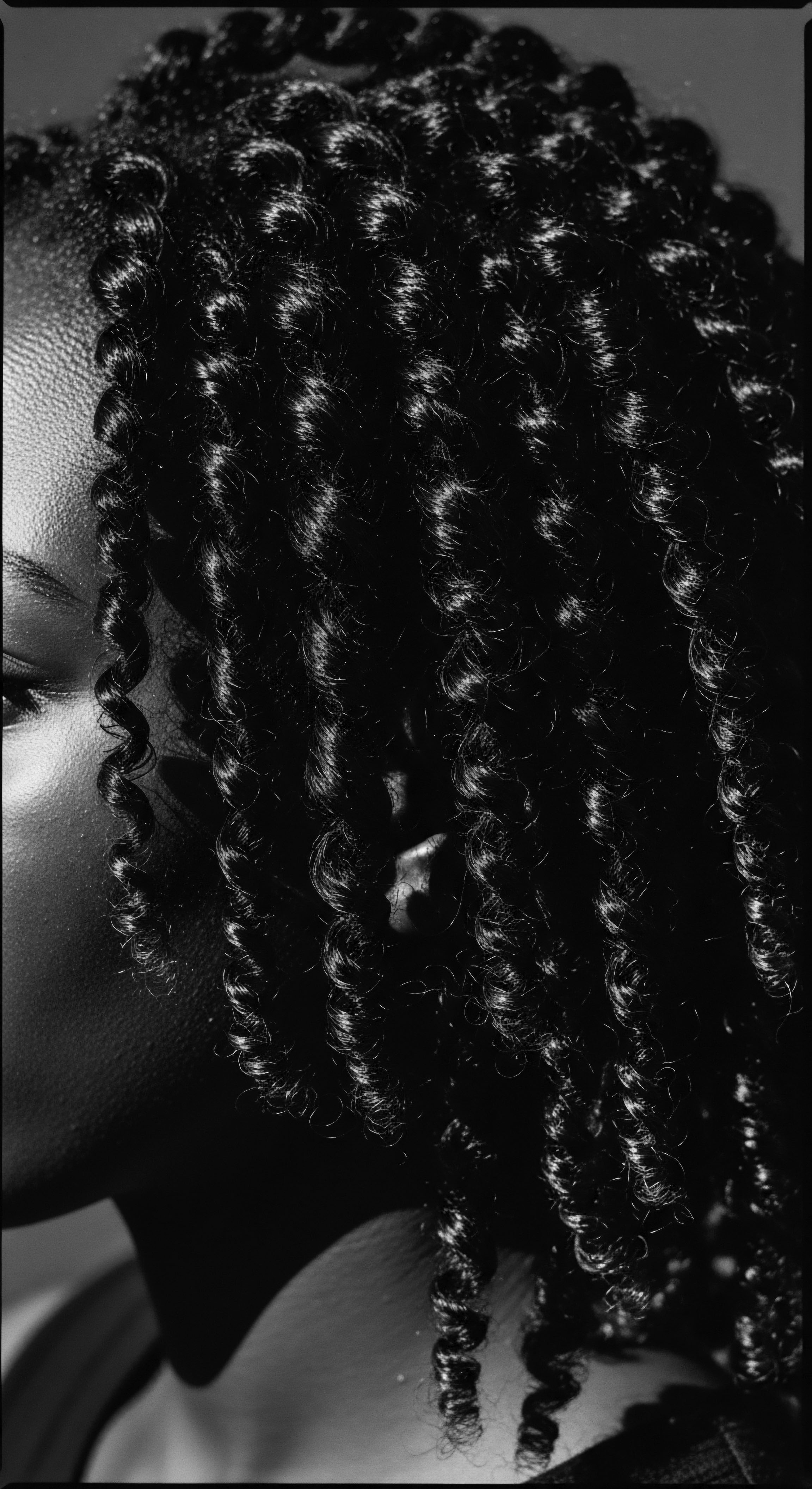
References
- Byrd, Ayana D. and Lori L. Tharps. Hair Story ❉ Untangling the Roots of Black Hair in America. St. Martin’s Press, 2001.
- Johnson, T. and Bankhead, T. Hair It Is ❉ Examining the Experiences of Black Women with Natural Hair. Advances in Applied Sociology, 2014.
- Robinson, Candace. The Politics of Black Women’s Hair. Journal of Undergraduate Research at Minnesota State University, Mankato, vol. 13, art. 4, 2013.
- Mbilishaka, Afiya. PsychoHairapy ❉ Applying Psychological Principles to Hair Care. Psychology Today. (While a specific book wasn’t found, Dr. Mbilishaka’s work on PsychoHairapy is widely cited in this context.)
- Waters, Mary C. Black Identities ❉ West Indian Immigrant Dreams and American Realities. Russell Sage Foundation, 1999. (Referenced for broad sociological context on identity).
- Weitz, Rose. Rapunzels Daughters ❉ What Women’s Hair Tells Us About Women’s Lives. Farrar, Straus and Giroux, 2004.
- Ozakawa, Laura. Hair, Beauty, and African American Women ❉ A Cultural Study. (Specific publication information is elusive, but the thematic content of such a study is relevant to the broader discussion).
- Tate, Shirley Anne. Black Beauty ❉ African American Women and the Politics of Race. Duke University Press, 2020.
